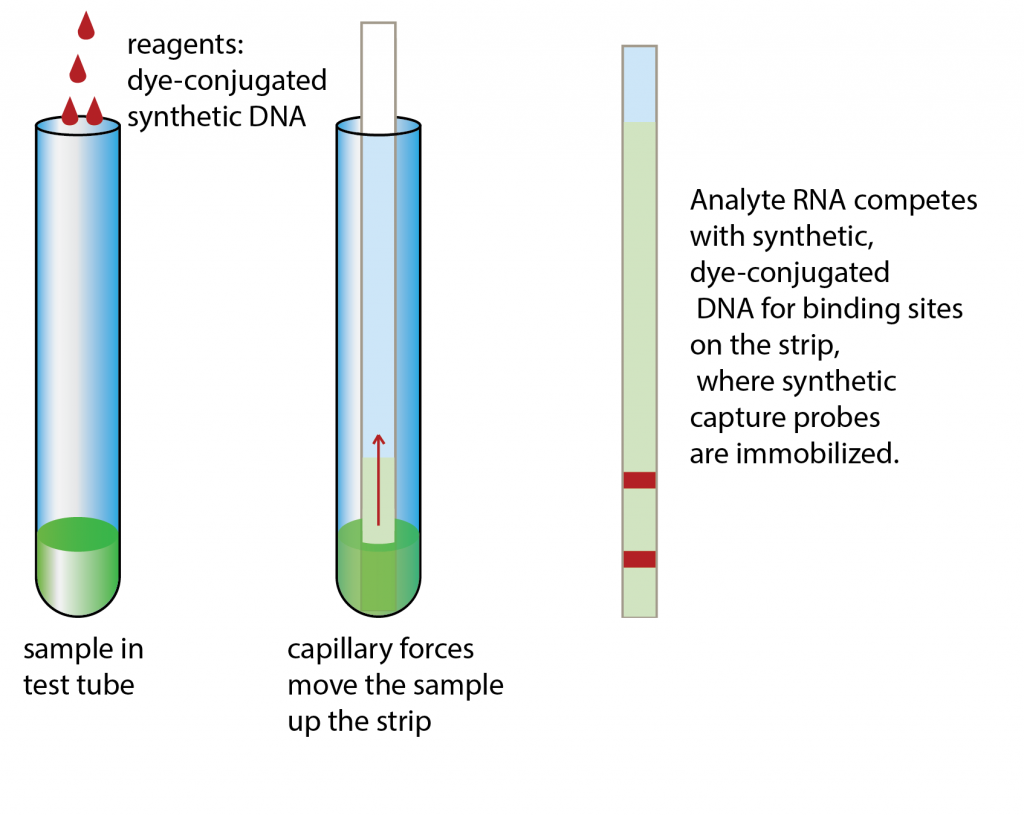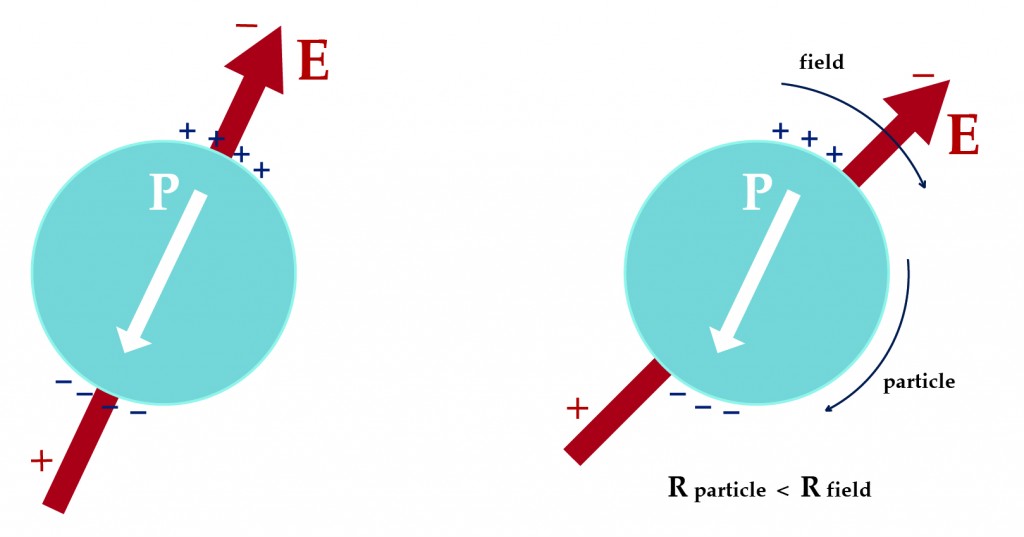
Esch, M.B.; Bäumner, A.; Durst, R.A. “Rapid Visual Detection of Viable Cryptosporidium parvum on Test Strips using Oligonucleotide-tagged Liposomes” Analytical Chemistry, 2001, 73(13), 3162-3167
Paper-based microfluidics are the basis for pregnancy test strips that detect hormones via antibodies that are immobilized on a paper test strip. We employed the same principle to detect the RNA of a pathogen (Cryptosporidium parvum). We immobilized synthetic DNA that is complementary to the RNA and placed it on the test strip. While the sample moves up the strip via capillary forces, the RNA in the sample comes into very close contact with the immobilized DNA. In our assay, the RNA competes with a second dye-conjugated synthetic DNA with the same sequence. This dye-conjugated DNA was initially added to the sample. In this competitive assay format, no color on the strip means the pathogen RNA was present.


